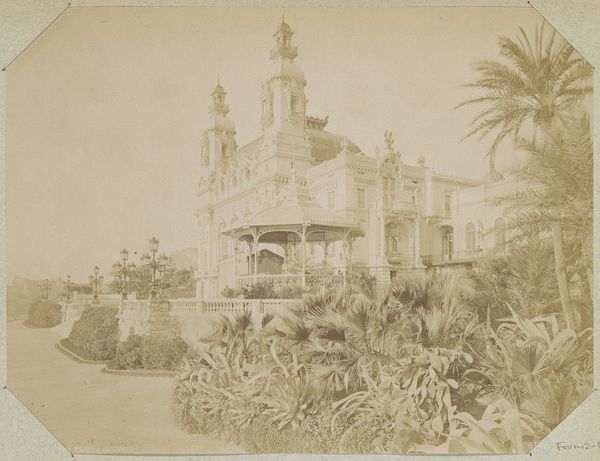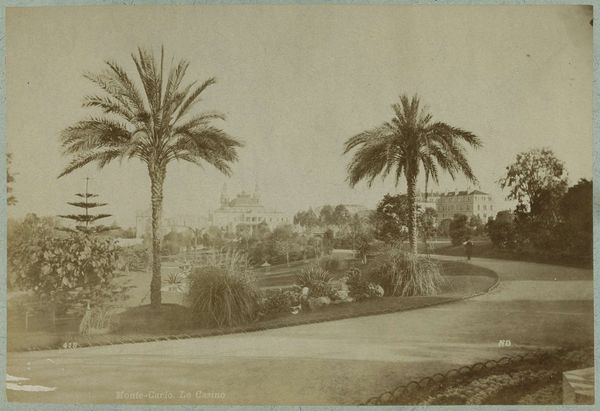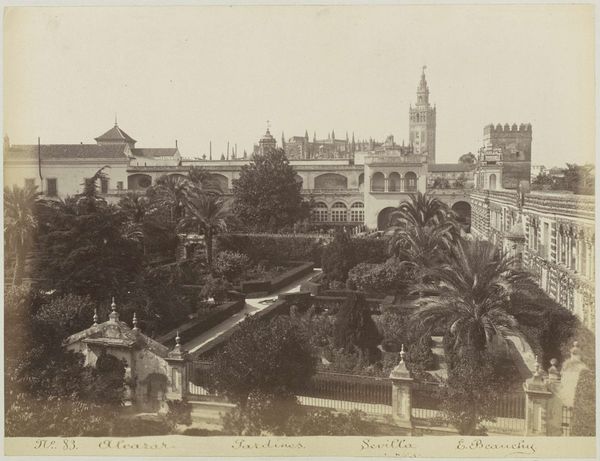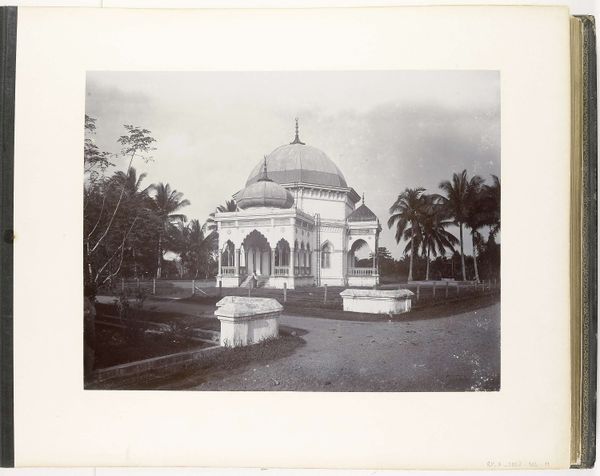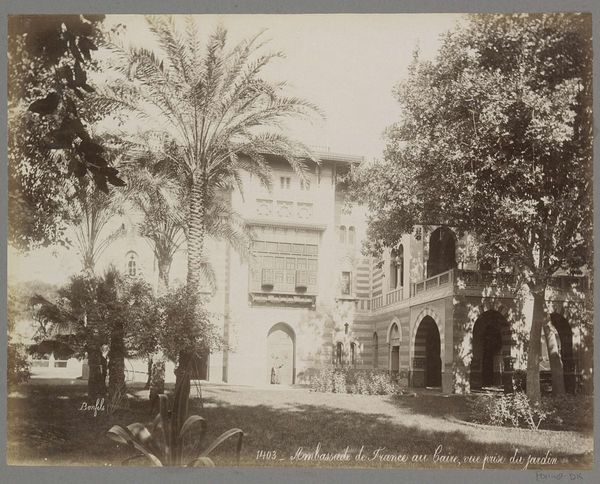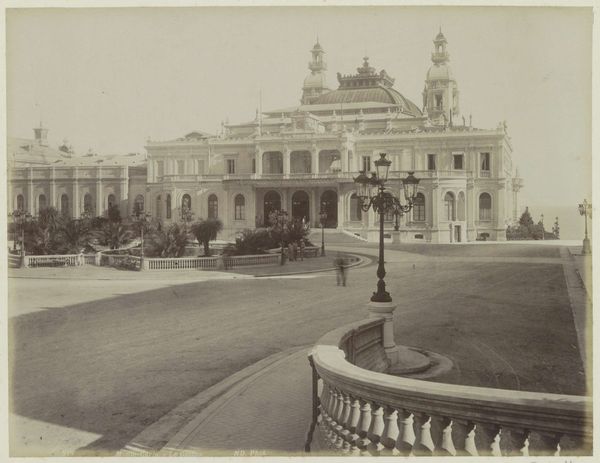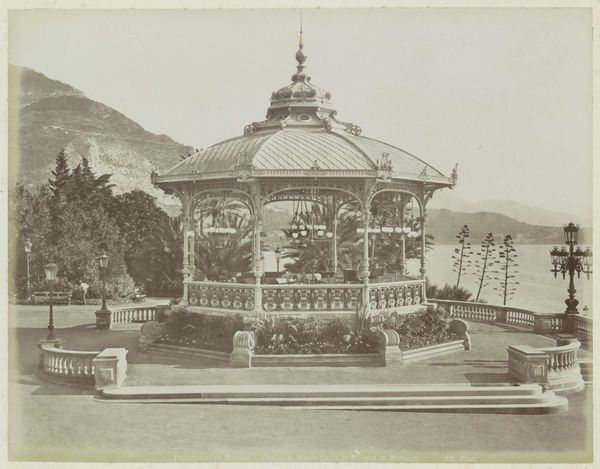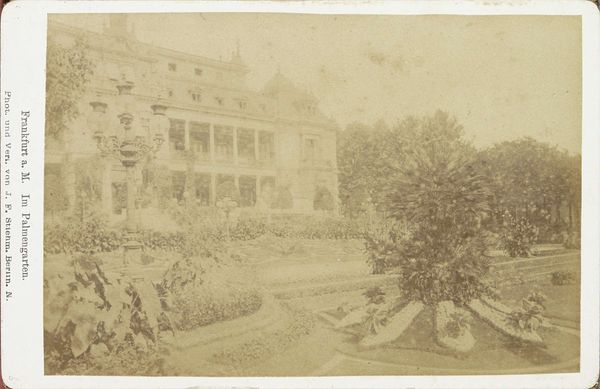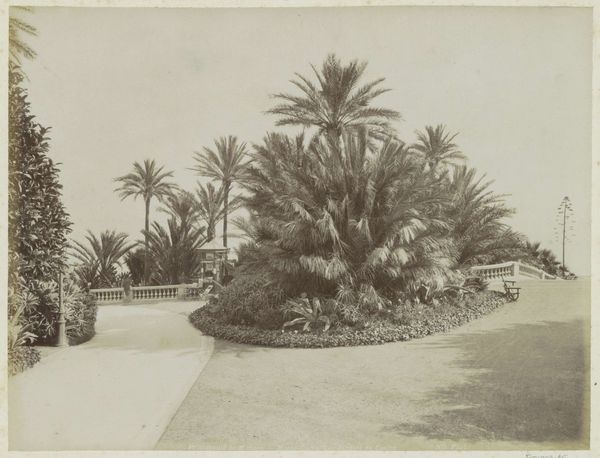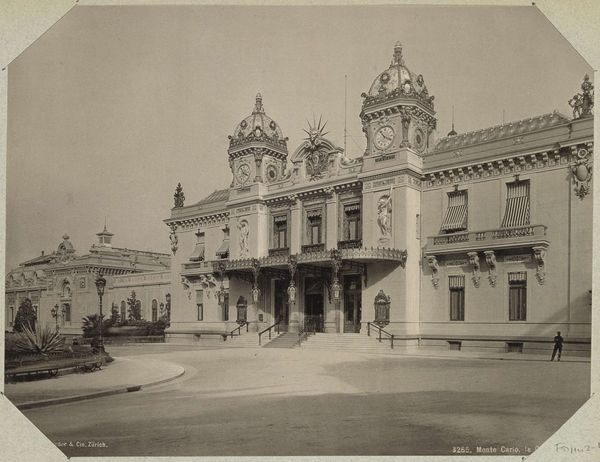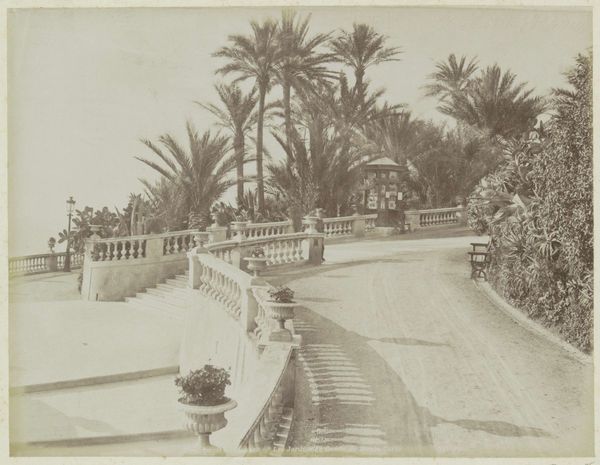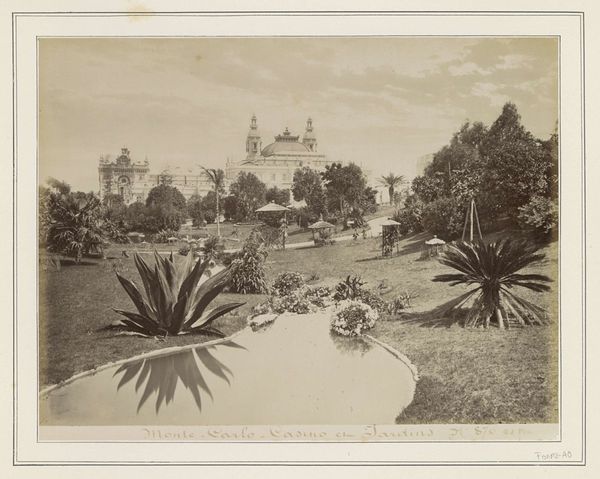
photography, albumen-print
#
landscape
#
photography
#
orientalism
#
cityscape
#
albumen-print
#
building
Dimensions: height 210 mm, width 275 mm
Copyright: Rijks Museum: Open Domain
Étienne Neurdein captured the exterior of the Monte Carlo Casino in this photograph. It shows the architecture of leisure, a space designed for pleasure and performance. The image conveys much about the social and economic structures of its time. Built in Monaco, a playground for Europe's elite, the Casino represents a concentration of wealth and a culture of conspicuous consumption. The architecture itself, with its ornate details and grand scale, speaks to the values of the Belle Époque. Its architectural presence also comments on the social structures of the time: It offered a stage for the wealthy to display their status, but its very existence depended on a social inequality that allowed some to indulge in luxury while others struggled. The Casino's presence inevitably shaped local culture, influencing everything from fashion to social etiquette. Historical research, including archival photographs, period literature, and economic data, helps us understand the Casino's complex role in society. This image, like all art, reflects the social conditions of its creation.
Comments
No comments
Be the first to comment and join the conversation on the ultimate creative platform.
